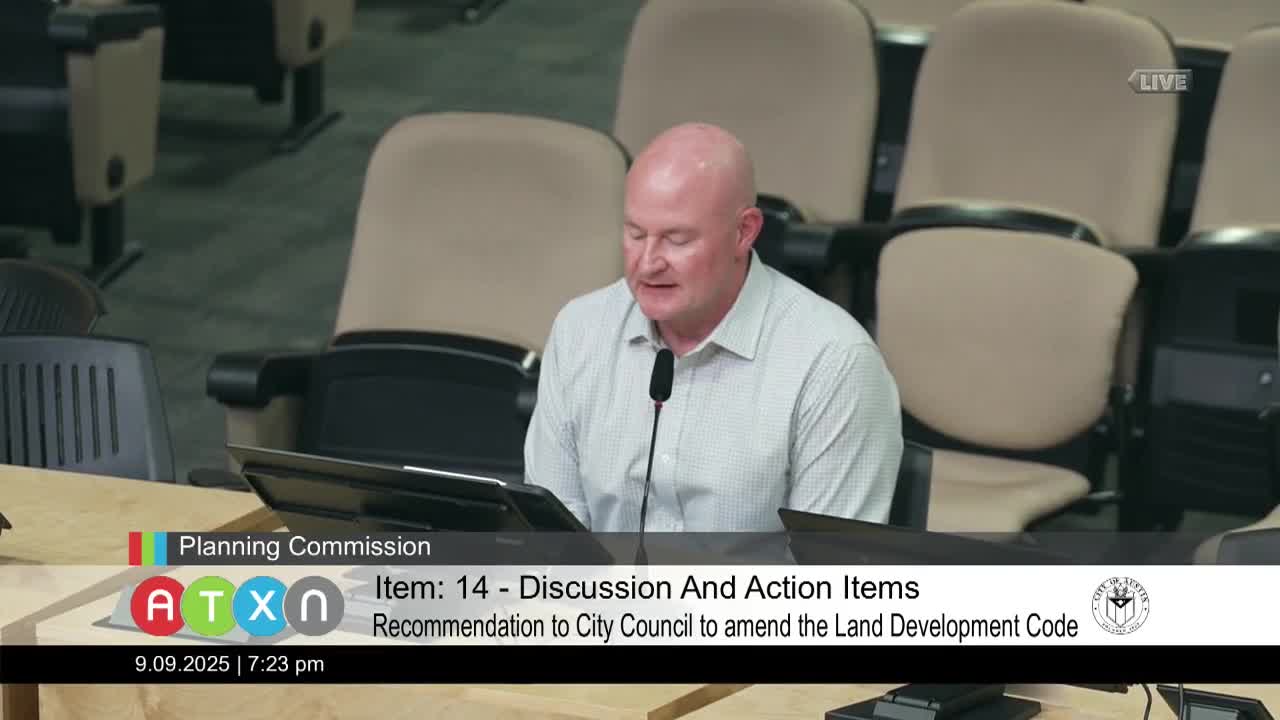Austin Council Addresses Complexities in New Home Ordinance for Multi-Unit Developments
September 09, 2025 | Austin, Travis County, Texas
This article was created by AI summarizing key points discussed. AI makes mistakes, so for full details and context, please refer to the video of the full meeting. Please report any errors so we can fix them. Report an error »

The recent meeting of the Austin Planning Commission highlighted significant discussions surrounding the city's home ordinance, marking the first major update to the land development code in nearly 40 years. This ordinance aims to facilitate the construction of two- and three-unit homes on single lots, a move intended to address the pressing need for affordable housing in Austin.
Key stakeholders, including builders and community advocates, expressed their support for the ordinance while also pointing out various challenges that have emerged since its implementation. Builders noted that while the ordinance simplifies the process for constructing multiple units, it has also introduced complexities that can hinder project viability. For instance, current regulations require extensive reviews and approvals that can delay projects and increase costs, particularly for smaller developments.
One major concern raised was the requirement for all new units, regardless of size, to install separate water meters, which can cost upwards of $2,000 per unit. This policy, along with new energy infrastructure requirements, has been described as a significant financial burden on developers, potentially discouraging the very housing initiatives the ordinance seeks to promote.
Additionally, speakers highlighted the need for adjustments to the ordinance to eliminate arbitrary minimum lot size requirements and simplify garage placement rules. These changes could enhance flexibility for builders and encourage the preservation of existing trees and green spaces while increasing housing density.
The commission acknowledged these concerns and emphasized the importance of refining the ordinance to ensure it meets its intended goals. The discussions underscored a collective commitment to making housing more accessible and affordable in Austin, with a focus on streamlining processes and reducing unnecessary regulatory burdens.
As the city moves forward, the Planning Commission plans to continue evaluating the home ordinance and its impact on housing development, aiming to strike a balance between regulatory oversight and the urgent need for more housing options in the community.
Key stakeholders, including builders and community advocates, expressed their support for the ordinance while also pointing out various challenges that have emerged since its implementation. Builders noted that while the ordinance simplifies the process for constructing multiple units, it has also introduced complexities that can hinder project viability. For instance, current regulations require extensive reviews and approvals that can delay projects and increase costs, particularly for smaller developments.
One major concern raised was the requirement for all new units, regardless of size, to install separate water meters, which can cost upwards of $2,000 per unit. This policy, along with new energy infrastructure requirements, has been described as a significant financial burden on developers, potentially discouraging the very housing initiatives the ordinance seeks to promote.
Additionally, speakers highlighted the need for adjustments to the ordinance to eliminate arbitrary minimum lot size requirements and simplify garage placement rules. These changes could enhance flexibility for builders and encourage the preservation of existing trees and green spaces while increasing housing density.
The commission acknowledged these concerns and emphasized the importance of refining the ordinance to ensure it meets its intended goals. The discussions underscored a collective commitment to making housing more accessible and affordable in Austin, with a focus on streamlining processes and reducing unnecessary regulatory burdens.
As the city moves forward, the Planning Commission plans to continue evaluating the home ordinance and its impact on housing development, aiming to strike a balance between regulatory oversight and the urgent need for more housing options in the community.
View full meeting
This article is based on a recent meeting—watch the full video and explore the complete transcript for deeper insights into the discussion.
View full meeting
